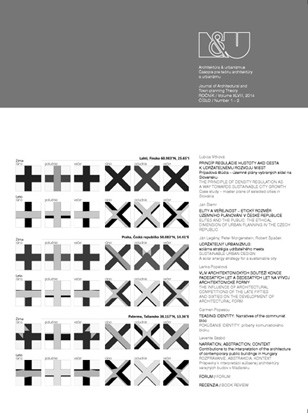VLIV ARCHITEKTONICKÝCH SOUTĚŽÍ KONCE PADESÁTÝCH LET A ŠEDESÁTÝCH LET NA VÝVOJ ARCHITEKTONICKÉ FORMY
THE INFLUENCE OF ARCHITECTURAL COMPETITIONS OF THE LATE FIFTIES AND SIXTIES ON THE DEVELOPMENT OF ARCHITECTURAL FORM
Author(s): Lenka PopelováSubject(s): Cultural Essay, Political Essay, Societal Essay
Published by: Historický ústav SAV, v. v. i.
Keywords: Czechoslovak architecture, architectural competitions, contemporary architecture, history of architecture
Summary/Abstract: The article “Czech and Moravian Architectural Competitions in the Sixties – Their Specific Contribution to the History of Czechoslovak Modern Architecture” was published in the 47th volume of the Journal of Architectural and Town-Planning Theory. It summarized the results of the research which dealt with 152 selected competitions from this decade, which were held in Bohemia and Moravia, as well as a number that were not intended for a specific location or important projects for foreign countries. The purpose of the research was to evaluate the specific role of architectural competitions from this era in the development of Czechoslovak architecture, to highlight the most progressive designs in terms of the development of form and typology, to point out the prominent position of Prague with regard to the number of designs realized, and to evaluate the impact of competitions on theoretical discussion, the work of particular architects and conservation principles and policy. The research pointed out that contemporary competitions were most influential in connection with the development of architectural form. This article describes the main formal categories to emerge in architectural competitions of the 1950s and 1960s. Categorization terminology is derived from Rostislav Švácha´s concept of architectural styles, as published in the book Czech Architecture 1945 – 1995 (though Švácha’s categories did not involve competition projects). As a starting point, this article provides a summary of the competitions intended to overcome the method of socialist realism (after 1954), in which the seeking of new inspirational resources held the key role. Architectural competitions reflected one of the few attempts to identify new tendencies in the discipline. Starting in 1955, attention turned to the tradition of Czechoslovak inter-war functionalism and to the contemporary western models. With the success of the Expo 58 pavilion in Brussels, the return to modern architecture assumed official standing. In addition, the text provils an overview of other ground-breaking competitions, which were also interpreted at that time as important for the ongoing stylistic change. From the research, it is clear that the International Style, in both its technicist and aestheticist forms, dominated the competitions of the 60`s (especially in the first half of the decade). Generally, the International Style was particularly invoked for administrative buildings, hospitals, schools, as well as cultural facilities. A technicist approach took hold in the first half of the 1960s (high-rise buildings with a substructure and a neutral curtain wall). As in the West, the International Style (especially its technicist manifestations, e.g. the public competition project for a general plan for a cultural center in Prague 9 – Vysočany, 1960 – 1961, J. Albrecht, K. Prager and associates, honourable mention) was criticised in Czechoslovakia primarily in terms of its semantic illegibility.
Journal: Architektúra & Urbanizmus
- Issue Year: 48/2014
- Issue No: 1-2
- Page Range: 54 - 73
- Page Count: 20
- Language: Czech

